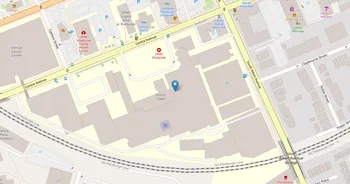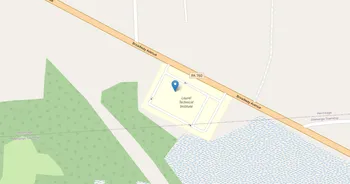University of Scranton : Overview, Courses, Scholarships & Rankings
About University of Scranton
Set in Pennsylvania's northeast, the University of Scranton is a Jesuit campus known for thoughtful teaching and a close-knit feel. Students explore the liberal arts, sciences, business, health fields and tech, with room for research, service learning and real conversation with faculty. Campus resources include modern labs, a light-filled library, tutoring and advising hubs, and a rec center that keeps things buzzing.
Life here leans collaborative and service-minded. There are clubs, arts performances, intramurals and quick escapes to trails and ski slopes. The career center helps line up internships with regional hospitals, schools, firms and nonprofits, and an alumni network across the Northeast keeps connections warm. Downtown Scranton adds coffee, music and work opportunities a short walk away. And the Jesuit habit of reflection gives the place an easy, steady pace you feel right away.
Key Institutional Details
Contact & Profile
Academic & Institutional
Academic Programs & Fields of Study
University of Scranton offers 74 degree programs across 22 major academic fields, graduating approximately 1,363 students annually. The most popular fields by graduate volume are Business (13 programs, 460 graduates), Health (12 programs, 329 graduates), Biological Sciences (6 programs, 112 graduates), Communication (4 programs, 60 graduates) and Security & Safety (3 programs, 54 graduates). Explore program details, award levels, and graduate demographics below.
Business (13 programs, 460 graduates)
Business Administration, Marketing and Entrepreneurship
| Program Name | Graduates | Gender Distribution | Award Levels | CIP Code |
|---|---|---|---|---|
| Accounting | 100 |
|
Bachelor's
Master's
Doctorate (R)
|
52.0301 |
| Management Science | 96 |
|
Bachelor's
Postbac Cert.
Master's
|
52.1301 |
| Finance, General | 66 |
|
Bachelor's
Master's
|
52.0801 |
| Business Administration and Management | 65 |
|
Bachelor's
Master's
|
52.0201 |
| Marketing Management | 35 |
|
Bachelor's
Master's
|
52.1401 |
| Human Resources Management | 25 |
|
Bachelor's
Master's
|
52.1001 |
| Operations Management and Supervision | 21 |
|
Bachelor's
Master's
|
52.0205 |
| Business Administration and Management | 21 |
|
Master's
|
52.0299 |
| International Business and Trade | 16 |
|
Bachelor's
Master's
|
52.1101 |
| Small Business Management | 8 |
|
Bachelor's
|
52.0703 |
| E-Commerce | 5 |
|
Postbac Cert.
Master's
|
52.0208 |
| Logistics and Supply Chain Management | 1 |
|
Postbac Cert.
|
52.0203 |
| Management Information Systems | 1 |
|
Master's
|
52.1201 |
Health (12 programs, 329 graduates)
Healthcare Professions, Medical Sciences and Clinical Practice
| Program Name | Graduates | Gender Distribution | Award Levels | CIP Code |
|---|---|---|---|---|
| Registered Nursing | 78 |
|
Bachelor's
|
51.3801 |
| Health Administration and Management | 63 |
|
Bachelor's
Postbac Cert.
Master's
|
51.0701 |
| Occupational Therapy | 54 |
|
Master's
|
51.2306 |
| Health Professions and Related Sciences | 49 |
|
Bachelor's
|
51.9999 |
| Physical Therapy | 40 |
|
Doctorate (P)
|
51.2308 |
| Nurse Anesthesia | 22 |
|
Doctorate (P)
|
51.3804 |
| Medical Informatics | 7 |
|
Postbac Cert.
Master's
|
51.2706 |
| Communication Sciences and Disorders | 4 |
|
Bachelor's
|
51.0201 |
| Vocational Rehabilitation Counseling | 4 |
|
Master's
|
51.2310 |
| Family Practice Nursing | 4 |
|
Master's
|
51.3805 |
| Public Health Education and Promotion | 3 |
|
Bachelor's
|
51.2207 |
| Nursing Practice | 1 |
|
Doctorate (P)
|
51.3818 |
Biological Sciences (6 programs, 112 graduates)
Life Sciences, Biotechnology and Biomedical Research
| Program Name | Graduates | Gender Distribution | Award Levels | CIP Code |
|---|---|---|---|---|
| Biology and Biological Sciences | 58 |
|
Bachelor's
|
26.0101 |
| Neuroscience | 20 |
|
Bachelor's
|
26.1501 |
| Biochemistry | 13 |
|
Bachelor's
Master's
|
26.0202 |
| Biochemistry and Molecular Biology | 11 |
|
Bachelor's
|
26.0299 |
| General Physiology | 9 |
|
Bachelor's
|
26.0901 |
| Biostatistics | 1 |
|
Bachelor's
|
26.1102 |
Communication (4 programs, 60 graduates)
Media Communications, Journalism and Public Relations
| Program Name | Graduates | Gender Distribution | Award Levels | CIP Code |
|---|---|---|---|---|
| Communication and Media Studies | 23 |
|
Bachelor's
|
09.0100 |
| Advertising | 17 |
|
Bachelor's
|
09.0903 |
| Broadcast Journalism | 13 |
|
Bachelor's
|
09.0402 |
| Communication Management and Strategic Communication | 7 |
|
Bachelor's
|
09.0909 |
Security & Safety (3 programs, 54 graduates)
Emergency Management, Law Enforcement and Public Safety
| Program Name | Graduates | Gender Distribution | Award Levels | CIP Code |
|---|---|---|---|---|
| Criminal Justice and Safety Studies | 21 |
|
Bachelor's
|
43.0104 |
| Cyber and Computer Forensics | 19 |
|
Bachelor's
Master's
|
43.0403 |
| Financial Forensics and Fraud Investigation | 14 |
|
Master's
|
43.0405 |
Education (4 programs, 49 graduates)
Educational Sciences, Teaching Methods and Pedagogy
| Program Name | Graduates | Gender Distribution | Award Levels | CIP Code |
|---|---|---|---|---|
| Early Childhood Education | 24 |
|
Bachelor's
|
13.1210 |
| Secondary Education and Teaching | 12 |
|
Bachelor's
Master's
|
13.1205 |
| School Counseling and Guidance | 8 |
|
Master's
Post-Master's
|
13.1101 |
| Special Education Teaching | 5 |
|
Master's
|
13.1001 |
Kinesiology (1 programs, 46 graduates)
Exercise Science, Sports Medicine and Physical Recreation
| Program Name | Graduates | Gender Distribution | Award Levels | CIP Code |
|---|---|---|---|---|
| Exercise Science and Kinesiology | 46 |
|
Bachelor's
|
31.0505 |
Psychology (3 programs, 43 graduates)
Psychological Sciences, Mental Health and Behavioral Studies
| Program Name | Graduates | Gender Distribution | Award Levels | CIP Code |
|---|---|---|---|---|
| General Psychology | 20 |
|
Bachelor's
|
42.0101 |
| Counseling Psychology | 18 |
|
Master's
|
42.2803 |
| Applied Behavior Analysis | 5 |
|
Master's
|
42.2814 |
Philosophy (2 programs, 36 graduates)
Philosophical Studies, Ethics and Religious Thought
| Program Name | Graduates | Gender Distribution | Award Levels | CIP Code |
|---|---|---|---|---|
| Philosophy | 35 |
|
Bachelor's
|
38.0101 |
| Religious Studies | 1 |
|
Bachelor's
|
38.0201 |
Liberal Arts (1 programs, 29 graduates)
Liberal Arts Education, General Studies and Humanities
| Program Name | Graduates | Gender Distribution | Award Levels | CIP Code |
|---|---|---|---|---|
| Liberal Arts and Sciences | 29 |
|
Associate's
Bachelor's
|
24.0101 |
Admission Requirements & Test Scores
Comprehensive overview of admission criteria, standardized test score ranges, and application requirements for prospective students at University of Scranton.
Application Requirements
Data based on IPEDS for 2022-2023 academic year. Test score ranges represent the middle 50% of admitted students (25th-75th percentile). Requirements may vary by program.
Tuition, Fees & Estimated Costs
Overview of tuition rates, housing, and other annual education expenses for undergraduate and graduate students
Financial Aid & Student Support
Summary of scholarships, grants, student loans, and financial aid statistics for undergraduate students
Student Success Metrics
Graduation rates and post-graduation earnings to help assess student outcomes and long-term value of education.
Loan Burden & Repayment Outcomes
Breakdown of loan repayment rates and student debt levels by income and dependency status.
Frequently Asked Questions
Find answers to the most common questions about University of Scranton
How much does it cost to attend University of Scranton?
The annual tuition at University of Scranton is $52,034 for in-state students. When including room and board, books, and other expenses, the total estimated cost is approximately $72,124 for in-state students. Additional costs include room and board $16,918 (on) / $10,200 (off) and books and supplies $1,300.
Data based on IPEDS program completions for 2022-2023 academic year. Tuition and cost estimates are approximate and may not include all fees, personal expenses, or transportation costs.
What academic programs and degree levels does University of Scranton offer?
University of Scranton offers 74 academic programs across 22 major fields of study, with available degree levels: Associate's, Bachelor's, Postbac Cert., Master's, Post-Master's, Doctorate (Research), Doctorate (Professional), Other Award.
Most popular program areas include:
- Business Administration, Marketing and Entrepreneurship (13 programs)
- Healthcare Professions, Medical Sciences and Clinical Practice (12 programs)
- Life Sciences, Biotechnology and Biomedical Research (6 programs)
- Media Communications, Journalism and Public Relations (4 programs)
- Emergency Management, Law Enforcement and Public Safety (3 programs)
Data based on IPEDS program completions for 2023-2024 academic year. Numbers reflect programs where students graduated, not all offered programs.
What is the acceptance rate for University of Scranton?
University of Scranton has an 84.4% acceptance rate and a 12.8% yield rate, making it moderately selective.
Admission statistics breakdown:
- Total applicants: 9,530
- Students admitted: 8,039
- Students enrolled: 1,028
Data based on IPEDS for 2022-2023 academic year. Admission statistics may vary by program and application cycle.
What financial aid and scholarships are available at University of Scranton?
University of Scranton provides financial aid to 29% of first-time, full-time students, with average grants of $35,819 and average loans of $10,060.
Average financial aid amounts by type:
- Pell grants: $5,518
- State/Local grants: $4,820
- Institutional grants: $33,295
- Federal loans: $5,245
The university supports 1,017 students with grants and 745 students with loans annually.
Data based on IPEDS for 2022-2023 academic year. Financial aid amounts and percentages may vary by program, enrollment status, and individual circumstances.
What is the average salary for University of Scranton graduates?
University of Scranton graduates earn a median salary of $62,921 after 6 years and $74,652 after 10 years.
The salary range 10 years after graduation spans from $51,775 (25th percentile) to $101,526 (75th percentile), with top earners reaching $103,100 (90th percentile).
Data based on IPEDS for 2022-2023 academic year. Salary data reflects graduates who received federal financial aid (approximately 60% of all graduates). Actual earnings may vary significantly based on program, location, and individual circumstances.
Related Universities




Found something useful? Help others discover it too! Share with friends, on social media, or save for later - every share helps someone find the information they need.